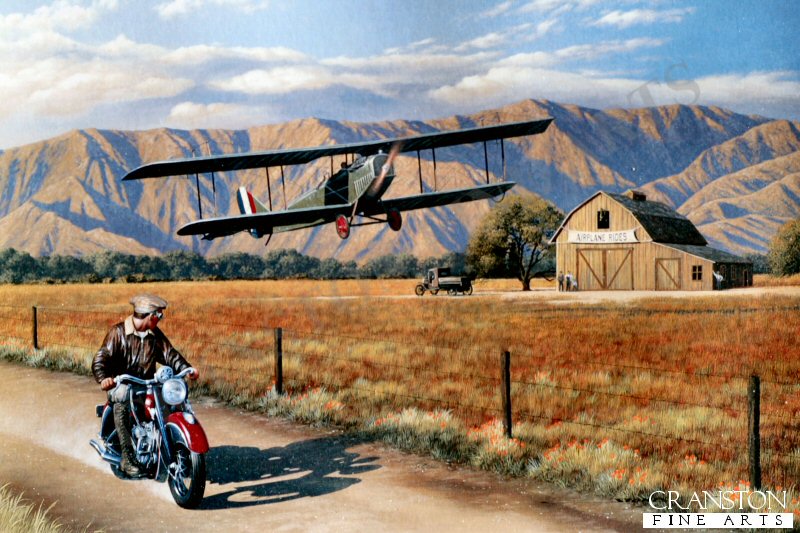- Sku:
- Vendor: Military Aviation Art Prints
Barnstormers by Stan Stokes. (B)
Prior to WW I the US Army had purchased a total of two dozen aircraft (principally Curtiss and Wright machines) and almost half of these had been destroyed in crashes. In addition eight of the Armys fourteen pilots had been killed in flying accidents. The Navy was not much better off with a total of six operational aircraft and only nine pilots on its rolls in 1913. With each accident something was learned, and both the aircraft and their pilots slowly improved. When WW I began, the Germans had more than 500 military aircraft. The French had a similar number and the Brits had about half that amount. Despite the outbreak of War in Europe, the US Congress continued to ignore the prospects for military aviation, appropriating only scant amounts of funds. When America finally entered the Great War in April of 1917 an Aircraft Production Board was organized. The Board recommended a massive appropriation to train 7,500 men for both the Army and Navy aviation efforts, and to assist industry in the production of 3,700 aircraft in 1918, 6,000 in 1919 and 9-10,000 in 1920. When Congress reviewed the budget requests it was heavily swayed, and without a single dissenting vote, appropriated $640 million to procure more than 20,000 aircraft and 40,000 engines. The government overestimated the fledgling American aviation industrys manufacturing capacity, with the result that many of the aircraft flown by American forces in WW I would be either foreign-built, or American-built aircraft of foreign design. One notable exception to this was the Curtiss JN-4 Jenny. The Curtiss Aeroplane and Motor Company was one of the two dominant American aircraft producers, the other being the Wright-Martin Aircraft Company. The Jenny became the primary trainer for training American pilots during the War, and many thousands of these aircraft were produced. Following the War, many surplus Jennies were available for purchase, and these aircraft were used in many roles, including flying the US Mail. Some of the 20,000 American pilots of the Army and Naval air services that reentered civilian life after the War purchased these surplus Jennies at a fraction of their original cost, and began barnstorming the country to earn a living. Taking their fragile airplanes to all areas of the country, these barnstormers exposed aviation to the general public. Remember, at that time the majority of people had never even seen an airplane, let alone taken a ride in one. Early on, the barnstormers could charge as much as $10-20 for an airplane ride, but as competition increased prices plummeted to as little as $2-3. Living as flying gypsies, these flyers had their share of tragedies, as they often had little knowledge of, and few funds for performing, even routine maintenance on their aircraft. Nonetheless, barnstormers are an important part of American aviation history, and Stan Stokes painting captures the feel of this between-wars era.
Only two prints remain of this sold out edition.
Limited edition of 100 giclee art prints.
Size 21 inches x 14 inches (53cm x 36cm)
Have a question?

Barnstormers by Stan Stokes. (B)


